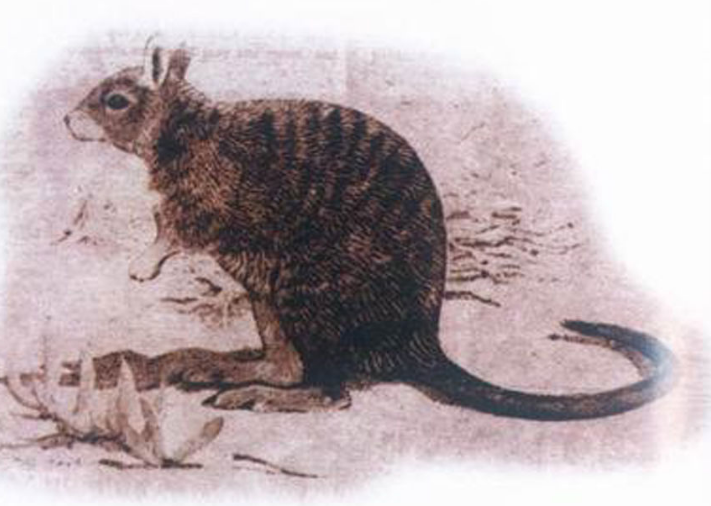According to incomplete statistics: 32 species of animals became extinct in the 18th century, 56 in the 19th century, and 120 in the 20th century. Zoologists fear that by the end of the 21st century, the number of animals that will disappear will increase to more than 600. If it weren't for the selfish actions of human beings, we wouldn't have had to look at these beings who once lived on the same planet as us through pictures, and now they are all in the past. It is expected that at the end of the 30th century, humans will also become a cherished animal on the earth.
Australian rabbit roe deer: extinct in 1890 There were originally 4 species of rabbit roe deer, except for the one on the picture that has long been exterminated by humans.

Of the remaining 3 species, only a very small number of lucky ones remain. After European immigrants entered Australia, rabbits and roe deer were hunted in large numbers, and their living areas were reclaimed into farmland, and rabbits had nowhere to forage and had to steal crops when they lost their homes, which increased the reason for people to hunt them.
Tasmanian Tiger (alias Thylacine):
Extinct in 1936, they looked nothing like tigers except for the mottled stripes on their bodies; on the contrary, they looked more like wild dogs. The early inhabitants of Australia hated these scourges of sheep, so they "wiped them out" in a short period of time by shooting, poisoning and booby-trapping. Although the last Tasmanian tiger has been dead for nearly 80 years, Australian scientists have recently begun to think about using dna from specimens to revive it.
East Possum: Extinct in 1940 The East Possum was once the most abundant Possum in Australia.
But because they tend to destroy farmland and gardens in search of food, they have long been hunted as pests, including iron clips, poisoning, and the destruction of their habitats. Thanks to the efforts of Australians, the eastern possum finally became extinct in 1940. The average lifespan of the eastern possum is usually less than 3 years.
Spotted Donkey: In 1883, the speed of the fire-spotted donkey reached 70 kilometers per hour, known as the "Steppe Knight".
This animal has a stubborn personality, and in the early years people had to describe its character as "untamed" and "unyielding to die". In 1860, a spotted donkey kept at London Zoo was shocked to death by hitting the wall because he could not stand the long confinement. The world's last spotted donkey was a female donkey raised at Amsterdam Zoo in the Netherlands, who survived until 1883, and whose death announced that the species had disappeared from the earth ever since.
White-footed Australian forest rat:
The 1902 extinct self-contained Australian forest rat has a very peculiar tail, with a blackish-brown upper part and a white lower part. Because humans naturally dislike rodents, animal experts are confused about the specific causes of extinction of self-sufficient Australian forest rats.
Aomi's Mouse:
The 1901 extinct Mihn's bullet rat has a pair of large ears, small and short forelimbs, but slender and powerful hind legs. The Michaelis squirrel usually forages in jumps and is extremely funny. Because of its physical appearance and action characteristics similar to that of a kangaroo, early European immigrants called this small rodent "kangaroo rat".
Queensland Furry-nosed Wombat:
The pups of the Queensland woolly wombat, which became extinct in 1900, usually stay in their mother's nursery bag for almost a year before they can truly live independently. Due to habitat destruction and hunting with livestock for food, the Queensland woolly wombat completely disappeared after 1900.
moa:
The complete extinction of the moa in 1800 was the largest of New Zealand's many birds, with an average height of 3 meters, higher than the current ostrich. Moa are "monogamous" and can live together for life or when one of them dies, the survivors go to find another mate. In the mid-18th century, European immigrants came to New Zealand, and because moa birds did not know how to hide, humans were often able to kill more than a dozen at a time. The large-scale burning and reclamation brought about by the migration wave has completely destroyed the living area of moa birds, and moa have been starved to death in large numbers because they have lost their foothold, and 1800 is the last year that people can catch moa birds.